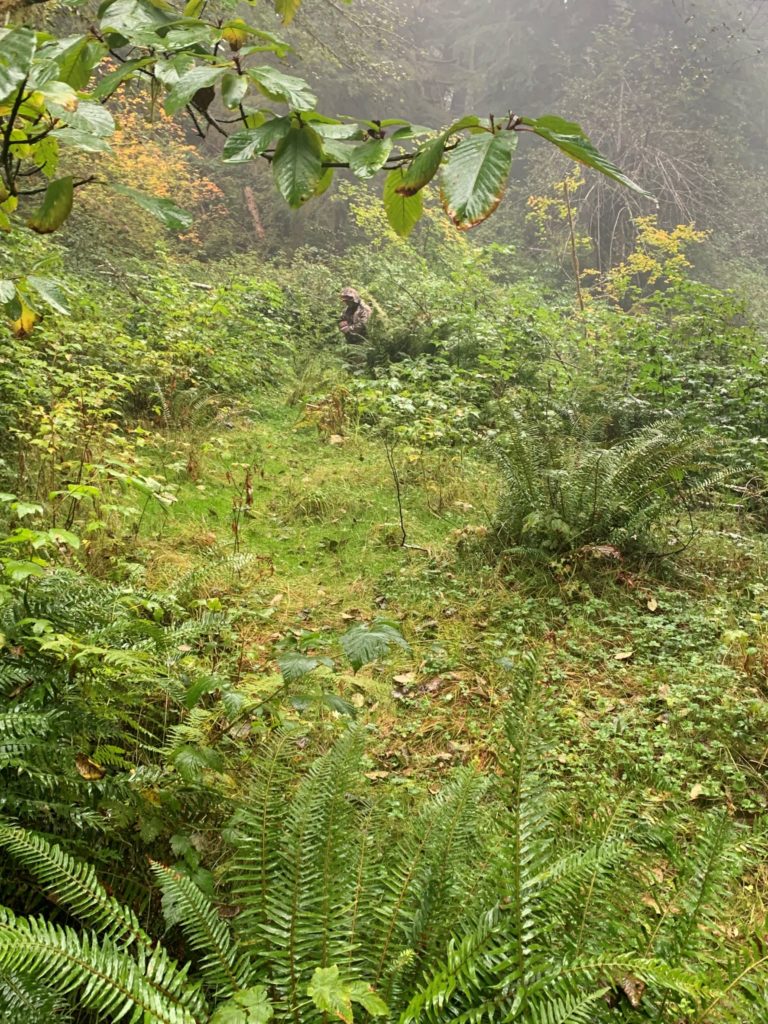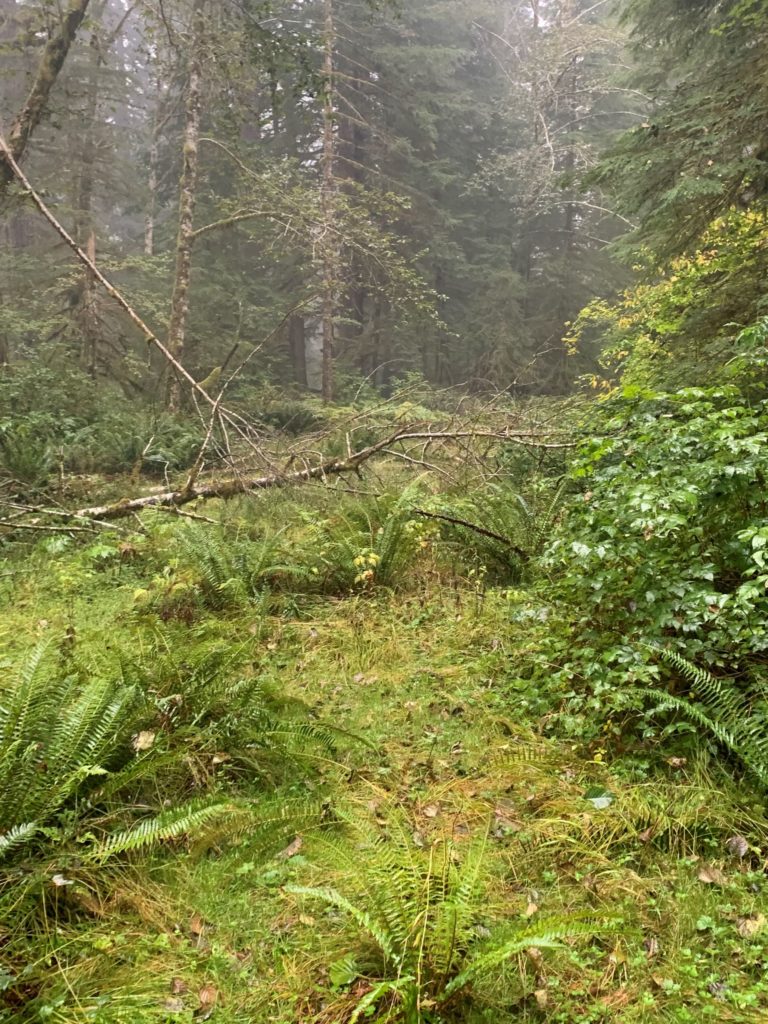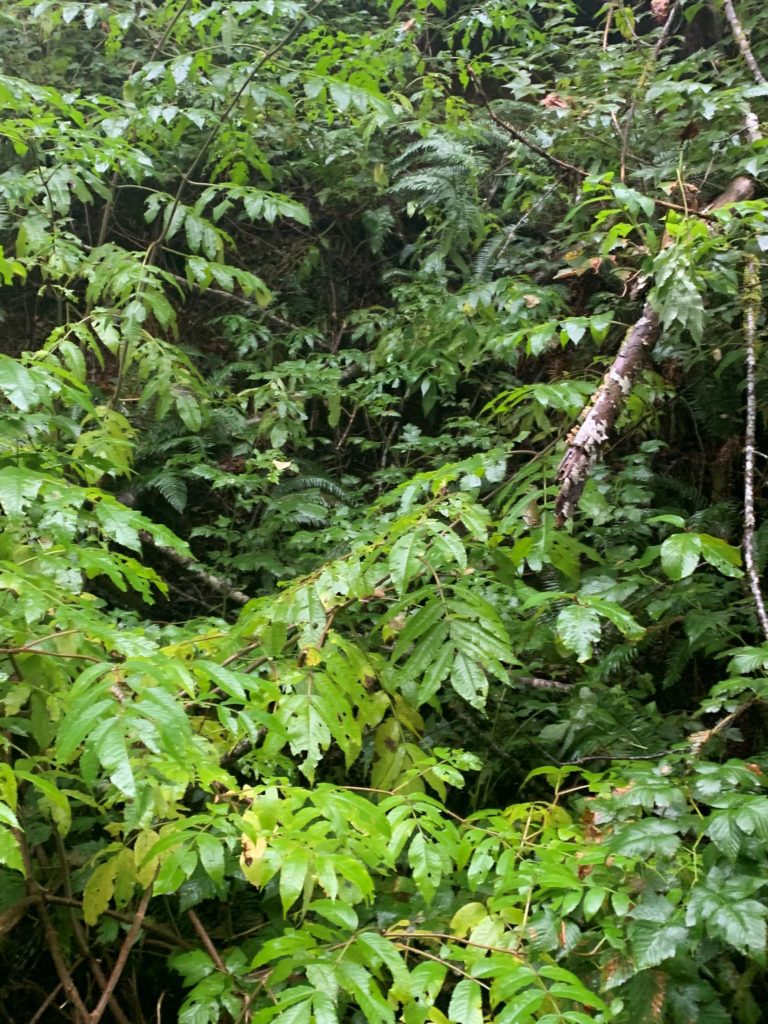My outdoor experiences are quite contrasting in the last two weeks. My trip to central Oregon was blue bird skies and relaxation in the boat. Yesterday, my son and I were slashing brush in the rain forest.
If you are not familiar with west coast geography, specifically Oregon then let me try to briefly describe. Moving from west to east, there are two sets of mountain ranges. The first one is called the coastal range, the highest peak is about 4000′ in elevation. Then, there is a valley nearly sea level in elevation followed by the Cascade range where the highest peak is 12,000′
The prevailing wind blows it is generally in the same direction, west to east. It causes a high amount of rain/snow on the western side of each range as the clouds drop moisture moving over the ranges. Consequently, the eastern side is much drier than the western side. Annual rainfall looks like this 80/40/10″ corresponding to the coast, valley and then east of the Cascades.
The way that Oregon breaks out deer/elk/etc. tags are roughly everything on the west side of the Cascades are over the counter. That means that anyone that is licensed can purchase a tag up until the first day of the season. Everything that is east of that is awarded by lottery draw. With my dad, brother and uncle we apply for the lottery each year and this year we did not win so I bought over the counter tags.

In the picture above, my son and I are walking down an abandoned road in a national forest. This road was once used for logging purposes, probably seventy years ago. Part of the changes in access over the last twenty years have had major consequences for hunters like myself.
When I started hunting in the 1980s the geographical landscape was pretty much the same. There are large swags of national forest or BLM land and large tracks of private timber company property. In the late 1980s, Oregon had the highest revenue from public timber of all of the states which had been the case since the early 1970s. Because all of that success, basically all of old growth timber was cut and the replant was not ready to harvest.
This caused political change. The forest service shifted from revenue to conservation which harkens back to the ‘spotted owl debate‘. The large timber companies went on business as usual because they already owned huge tracts of land and were diversified in other areas of the country and even Canada. It was the mom and pop mills that folded as a result of no supply.
Now that public land was largely left to grow wild, private timber land saw the brunt of the hunters. Why? because you cannot see anything in this jungle. If you choose to go in, the brush is over your head and good luck dragging a rifle and a backpack. Also, with less people working in the forest there was less ownership of the overall resource and then came trouble. As a result, private land owners put up gates.
Industry consolidation and streamlining means that there are far fewer vertically integrated companies owning land. For instance, Weyerhaeuser bought all of Willamette industries who acquired all the land that they owned as well. Weyerhaeuser’s policy as of about 10 years ago is to sell leases for access. Boil that down to essentially one person has exclusive access for recreational purposes. The leases are also highly restrictive to even bringing guests.
The situation for a lot of the other timber companies is that there is no lease program, just a gate. The general policy for access is walk-in. Nothing wrong with that, I do but it concentrates other hunters to essentially the main roads. Contrasting that hunting on the east side of the state and you can at least walk off the road and through the forest.
As my son and I spent time in the woods, I couldn’t help but feeling that the environment was sterile. Yes, we saw sign that animals have been in the area but I also saw a lot of boot prints. Who knows how many hunters in the last few months have walked down this same road. We saw no rabbits, squirrels, chipmunk, birds, turkeys, fox or anything for that matter. There have been times in the woods where I sit down and see or hear other animals moving about, not yesterday.
This is why western Oregon hunting is tough. The weather is miserable, the terrain is extremely difficult, the access is competitive and the probability is slim to none. We do all of this to get 40-60 pounds of meat and maybe some antlers to put on the wall? It has to be a labor of love more than anything productive.
End Your Programming Routine: You don’t get anything when you don’t try. And, you also rarely are successful when you don’t spend much time learning the patterns and habits of the area year round. I have seen deer in the area and I have seen recent encouraging sign when I have hunted this area in the past. This is why I choose to go back. My thoughts on it for this year are better luck somewhere else, I just don’t know where at this point.


Recent Comments